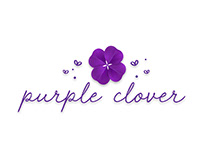
Are There Risks Associated With Whitening Yellow Teeth? When to Seek Professional Help The Final Takeaway
The best accessory, as they say, is a smile. But when dealing with naturally yellow teeth, flashing a grin—on Instagram or IRL—is a lot easier said than done. While it's certainly no big deal to have teeth that aren't flawlessly, naturally white (and, real talk, very few people do), it can be disheartening to feel less-than-stellar about your smile.
Thankfully, we're living in a time when whitening discolored teeth has never been easier, thanks to a plethora of at-home and in-office treatment options. Thinking about trying one of them out? We tapped dentists to explain which treatments actually whiten naturally yellow teeth.
What Is Considered a "Natural" Tooth Color?
Let's get this out of the way: There is no "normal" range for what a "natural" tooth color should look like. "Teeth vary in shades—some are genetically determined, some are impacted by medications or illnesses while teeth are developing, or other variables like diet," Dr. Lowenberg says. Generally speaking, dentists use the VITA Classical Shade Guide as the standard reference for natural tooth colors. The guide includes 16 shades ranging from:
- A1 – A4 (reddish-brownish)
- B1 – B4 (reddish-yellowish)
- C1 – C4 (greyish shades)
- D2 – D4 (reddish-grey)
In other words, even the “whitest” teeth have some tinted undertone, but lifestyle and dental hygiene practices can make a difference. “In general, what’s considered a ‘normal’ shade range in America has become brighter than it was in the past as people are taking better care of their teeth, getting regular cleanings, and doing whitening treatments,” Dr. Marashi says.
The Causes of Yellow Teeth
Genetics
Some people are born with teeth that are more yellow— or gray-tinted than others. "Just like eye color is inherited, so is the color of your teeth," Dr. Lowenberg says. The determination of color is based on the color of dentin, which is the second layer of tooth structure below the enamel. Enamel, for the most part, is translucent, so if your dentin layer is very dark or yellow, it will make your teeth appear yellower than most."
Lifestyle Factors
You've likely heard that certain foods and beverages can cause teeth to discolor (think: coffee and red wine), and experts confirm that this isn't just an old wive's tale. "Foods and beverages can cause staining if they sit on your teeth and attach to the surface," Dr. Marashi explains.
He says coffee, tea, red wine, turmeric, and berries are some of the most common offenders. "However, I would never tell my patients to stop drinking coffee—you have to enjoy life," Dr. Marashi says. "I have my cup of coffee every morning and brush my teeth after—it's all about dental hygiene."
"Any food or drink that would stain a white blouse will stain your teeth. And candies or sticky carbohydrates, like pasta and bread, will also stick to the teeth, causing surface stains to form," Dr. Lowenberg adds.
Age
If your teeth aren't quite as white as they once were, it could be because you're getting older. "Age also causes teeth to darken because as you age, the outer enamel layer wears away, exposing the darker dentin," Dr. Lowenberg says. "If your teeth appear to be getting darker or yellower with age, you should try an over-the-counter whitening product or see your dentist for in-office whitening. However, if you have had 'yellowish' teeth since you were a kid, it is unlikely that whitening will be effective since that is a genetic component."
Dental Hygiene Practices
The way you care for your teeth directly correlates to their appearance. Our experts agree that poor dental hygiene, such as not brushing, flossing, or rinsing enough to remove plaque and stains, can also cause yellowing. It is important to do these steps in the morning and night to avoid tooth decay, bad breath, staining, and yellowing of our teeth.
How to Treat Yellow Teeth
Tweak Your Habits
The most obvious way to treat yellow teeth is to avoid habits that cause more discoloration and double down on proper oral hygiene. While you don’t have to swear off coffee and red wine forever, make it a point to brush your teeth immediately after consuming them to avoid any potential staining. Beyond that, be sure to brush, floss, and rinse regularly.
Try an At-Home Treatment
Believe it or not, those at-home white strips really can make a difference. “You want to look for products that contain hydrogen peroxide,” Dr. Marashi says. The ingredient breaks down stains on the molecular level, making teeth look instantly whiter. Just keep in mind that they won’t deliver long-term results and tend to max out on impact after two weeks. As Dr. Lowenberg says, “The whitest your teeth will ever be are the day you stop using the strips.”
“If you have sensitive teeth, you’ll want to look for a lower percentage of around six percent,” Dr. Marashi notes. “If you don’t have teeth sensitivity, options with a higher concentration, up to 15 percent hydrogen peroxide, will deliver faster results. Both pros recommend Crest 3D Whitestrips ($46) as the best over-the-counter option.
Whitening toothpaste can also help. Again, look for formulas with hydrogen peroxide, like Colgate Optic White Pro Series Whitening Toothpaste ($8).
Visit the Dentist's Office
“Products like white strips provide short-term whitening, so they are not as effective as in-office bleaching,” Dr. Lowenberg points out. “They contain a weaker percentage of hydrogen peroxide and don’t remain isolated on the teeth as well as in-office whitening.”
If you're ready to try a pro-grade treatment, your options range from in-office bleaching (like the Pola One treatment, which uses light-activated bleach with a higher concentration of hydrogen peroxide than OTC whitening strips) to heavier-duty at-home trays that need to be prescribed by your dentist. "The in-office whitening combined with the take-home trays will give the best possible results from bleaching," Dr. Lowenberg says.
That said, it’s important to know that there’s only so much you can do to change the shade of genetically discolored teeth. Even if you whiten your enamel, your natural dentin color is pretty much set in stone. In that case, if it truly bothers you, porcelain veneers may be your best bet for a whiter smile.
Opt for a "Natural" Remedy
While you’ll likely get the best whitening results from an in-office or OTC treatment, specific natural remedies may help. “Chewing raw, crunchy fruits and vegetables, like apples, radishes, celery, kale, or carrots, can mechanically remove food and bacteria from your teeth and mouth while scrubbing away surface stains to help prevent the dull appearance of teeth,” Dr. Lowenberg says.
Dr. Marashi recommends using charcoal toothpaste, like Hello Activated Charcoal Toothpaste ($6), to remove stains from the surface of your teeth. “It does not contain preservatives, and it absorbs and binds the compounds that stain your teeth, so once you rinse, your teeth are left bright and shiny,” he says.
Are There Risks Associated With Whitening Yellow Teeth?
When used properly, the only real risk associated with whitening treatments is temporary sensitivity. This can occur due to exposure to hydrogen peroxide, but the sensation will likely subside on its own. However, if done too frequently, whitening treatments (like strips) can cause gum irritation, uneven tooth coloring, and tooth damage.
Beyond that, you'll want to refrain from whitening if you have a cavity or tooth decay. "If you have decay or cracks in your teeth, the bleach can seep into them and cause extreme sensitivity," Dr. Lowenberg says. "You also cannot whiten dental work, like crowns of porcelain veneers, because it won't change color."
When to Seek Professional Help
You should only seek professional help for yellow teeth if the issue bothers you and you feel unable to treat it at home. “Tooth discoloration isn’t a painful experience, so I would say seek the help of a professional when it bugs you enough [to do so],” Dr. Marashi says. “You and your dentist can discuss your whitening goals and available solutions, including professional teeth whitening treatment or porcelain veneers.”
The Final Takeaway
There's nothing wrong with having yellow teeth (for many of us, it's natural). However, if it bothers you, there are plenty of options to help you achieve a whiter smile. You can implement easy at-home solutions like using whitening strips or targeted toothpaste. Alternatively, you can leave it to the pros and book an appointment for in-office bleaching. If neither approach delivers your desired whiteness, it may be worth investing in porcelain veneers. To help you determine which method will suit you, it's best to assess your lifestyle and budget first.

